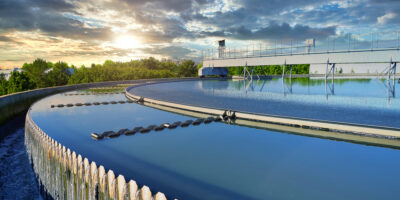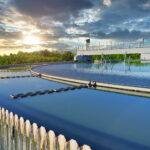As water is seen as one of the world’s most precious resources, providing enough water with appropriate quality and quantity may be considered as one of the most important challenges in human history.
The world is, as we speak, experiencing serious growth in urban population. Together with water scarcity due to climate changes, this creates massive challenges for urban water management. With climate changes and rapidly increasing population it has more than ever become crucial to find ways to manage urban water environments efficiently – today and in the future for the sake of both mankind and the environment. Luckily, new technologies can provide the water industry with smart ways and innovative methods to access data and information in real-time in order to manage water supply and water distribution systems in the best possible way.
The challenge of providing high-quality drinking water through efficient water distribution
The purpose of water distribution is to deliver water to consumers with appropriate quality, quantity and pressure. Which is why the provision of safe drinking water is of vital importance, yet something that is taken for granted in parts of the world where access to high quality drinking water is possibly not even considered an issue.
Jan Krejcik, Group Sales Executive for Urban Water at DHI explains the issue like this: ‘In countries where instant access to clean water is taken for granted, the biggest challenges are ageing assets and the long-term self-sustainability of the water supply systems. Whilst the industry faces an increasing demand for improved water quality too.’
At the same time, the water industry is also experiencing a decrease in consumption per capita, which makes it difficult to keep water pricing fair whilst continuing to invest in the infrastructure at the required level. Taking this into consideration together with the increase in demand for timely and accurate information accessible via media and social networking, there are a lot of pressures placed on water utility companies responsible for the distribution and delivery of high-quality drinking water.
Tackling the issues of water distribution with new technologies
A way to take some of the pressure of water utilities and address the challenge of finding ways to distribute water efficiently, is to exploit how new emerging technologies, such as artificial intelligence (AI), can help the water sector in terms of accessing the right and accurate information to distribute and deliver high-quality drinking water. ‘Self-learning algorithms or machine learning with big data allow businesses to make better and faster forecasts of, for example, water demands and/or actual water consumption and thus help to operate the water distribution systems more dynamically and efficiently,’ underlines Jan Krejcik.
The modelling of water systems and processes is an industry standard today but imagine having access to information about water quality and consumers’ consumptions patterns in a network from anywhere, anytime and using any device. Imagine if you could choose to operate your pumps, valves or a treatment plant from anywhere, anytime, using any device. That’s what the advantages of new technologies implemented in modelling software provides. It enables teamwork in real-time wherever your team, network or data are located in the world – for the benefit of your customers and your business.
A future perspective on drinking water
Looking forward, one of the dominant challenges for the water industry will continue to keep and increase peoples’ trust in drinking tap water. While at the same time dealing with the enormous challenges and consequences presented by climate changes such as water quality and water scarcity. This means that as an industry, we need to find ways in which we can reduce water losses and build more resilient networks in order to cope with increasing urbanisation and population growth. By enabling new technologies to provide a better information base, businesses and decision-makers can make more accurate and evidence-based decisions that drive improvement and secure high-quality drinking water.
At DHI we are currently in the process of using available new technologies to help solve urban water issues. For more information on the services and technology available today to tackle a wide range of water supply and distribution challenges, contact us.








